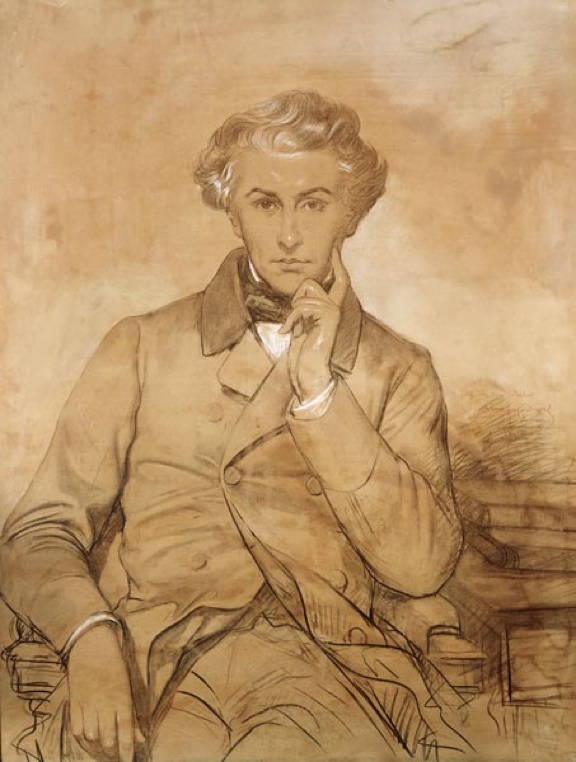For every umpteenth recording of a Beethoven piano concerto, somewhere else an enterprising ensemble decides to throw a fresh morsel of the forgotten past our way. One of this summer’s treats has been listening to the Symphony No. 4, Op. 33, by French composer Napoléon-Henri Reber (1807-1880), a contemporary of Hector Berlioz.
- Classical Music 101: What Does A Conductor Do? - June 17, 2019
- Classical Music 101 | What Does Period Instrument Mean? - May 6, 2019
- CLASSICAL MUSIC 101 | What Does It Mean To Be In Tune? - April 23, 2019
Reber, who succeeded Jacques Halévy as composition professor at the Paris Conservatoire in 1851, doesn’t even merit mention in the most recent edition of the the French Dictionnaire de la musique, much less any attention on concert programmes.
 But a new album from French label Naïve, enticingly titled Le Paris des Romantiques, opens with the Symphony No. 4, vividly brought to life for the first time since its last noted performance in 1863 on period instruments by Le Cercle de l’harmonie and its remarkable conductor Jérémie Rhorer.
But a new album from French label Naïve, enticingly titled Le Paris des Romantiques, opens with the Symphony No. 4, vividly brought to life for the first time since its last noted performance in 1863 on period instruments by Le Cercle de l’harmonie and its remarkable conductor Jérémie Rhorer.
The 30-minute symphony is divided into four movements: brisk, slow, scherzo and a brisk close containing, as was the norm for any serious work in the day, a fugal iteration of the main musical theme.
The whole work displays crisp, Classical structure, as if we were the recipients of a mid-19th century Conservatoire lecture on how to write the perfect symphony. We hear Germanic echoes of Haydn, a lot of late Beethoven, some Schubert and Mendelssohn in this work, which probably dates from the 1840s. But, what makes this work memorable is how, if one substituted voices for the instruments carrying the melody, these could be sections from an opera.
Here is music that has stretched its power to include everything but the words themselves.
As any serious composer was expected to do in Paris, Reber wrote music for ballet (one of which inspired a 30-year-old Marius Petipa in his second work for the Imperial Ballet of Russia in 1848) as well as five operas.
I had to laugh at how some things never change when I read a review of the work’s premiere in 1857. This is a snippet from the unsigned critique, published in the Revue et Gazette musicale de Paris:
The last matinée of the Société des Concerts was marked by quite a rare event: the performance of a new symphony by a living composer. M. Henri Reber, who had fortunately succeeded in overcoming the obstacles that are notorious for being insurmountable. despite the wariness of an audience that prefers to hear pieces it knows and likes. M. Henri Reber could only have been pleased with the reception he received. His Symphony (in G Major) was listened to with approval and was often applauded. The first movement, which beings pianissimo, was very pleasant, and that was immediately understood. The beginning of the adagio … is of a delightful sweetness and cries of bravo were heard; but the movement is perhaps just a little long. The scherzo is charming from beginning to end, and the violins with their lovely pizzicato effects are remarkable. Everyone cheered this piece even more warmly. The finale deserves nothing but praise. In short, M. Henri Reber’s new symphony is a remarkable achievement, full of interesting detail and finely crafted in its orchestration.”
To find out more about this symphony, click here. The album also includes a beautiful early Rêverie et Caprice by Hector Berlioz, with Julien Chauvin an elegant soloist. Also, pianist Bertrand Chamayou performs an electric interpretation of Franz Liszt’s Piano Concerto No. 1 on an Erard grand piano from 1837.
(There is supposed to be an audio stream available here from a Radio Bremen broadcast of a live concert of this programme a year ago, but I wasn’t able to get it to work.)
John Terauds
- Classical Music 101: What Does A Conductor Do? - June 17, 2019
- Classical Music 101 | What Does Period Instrument Mean? - May 6, 2019
- CLASSICAL MUSIC 101 | What Does It Mean To Be In Tune? - April 23, 2019




